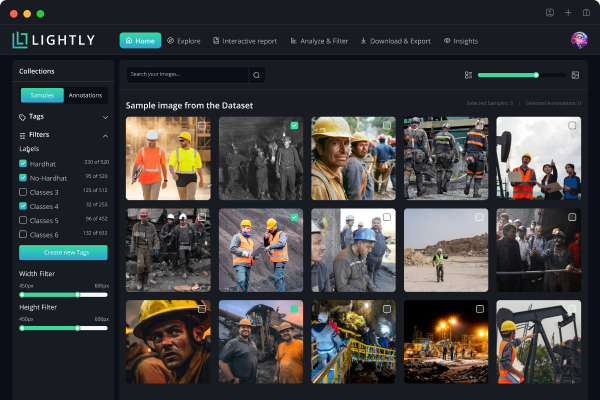Predicting Rain from Satellite Images (Part 2)
Table of contents
Can a neural network predict rain from satellite images? Part 2: Method and results
From satellite images to rain predictions: here’s an overview on what worked.

What approach did we use?
A convolutional neural network for semantic segmentation (ENet, a UNet variant) trained on infrared satellite images.
How did training perform?
- ~1.6 hours for 100 epochs on full dataset.
- 50% faster training on curated dataset from Part 1.
What did the model achieve?
- High accuracy for distinguishing “rain” vs. “no rain.”
- Lower accuracy for heavy rainfall, due to imbalanced data.
- Predictions often matched ground-truth shape, though fine details were less precise.
How did it compare to existing models?
In Mexico, our neural network produced fewer false positives than a physical weather model.
Key takeaways?
- Reasonable results with as little as 500 curated images.
- Dataset balance matters: more heavy-rain samples and higher resolution would improve accuracy.
- Data curation (LightlyOne coreset sampling) cut training time in half while slightly improving validation accuracy.
Introduction
This is part two of a two-part blog:
- Part 1: Data Collection and Analysis
- Part 2: Method and Results
In the last part of this series, we detailed our data collection and curation process. Here, we explain how to train a convolutional neural network to perform semantic segmentation on satellite images in order to detect rain. Make sure you have read part 1 before you continue!
Neural networks and semantic segmentation
Convolutional neural networks are a class of artificial neural networks applied in computer vision. Their shared-weight architecture allows them to efficiently process image data and to detect relevant features easily. Satellite images are perfectly suited for machine learning. The domain of possible input images is fairly limited as the satellite is always at the approximately same height and objects will therefore always appear at a similar scale.
Semantic segmentation is the task of assigning a label to each pixel of an image. For example, in autonomous driving an algorithm will often have to learn which pixels of an image represent a car, a pedestrian, a cyclist, a stop sign, and so on. You can read more about this here. A typical architecture of a neural network designed for semantic segmentation is the UNet (see image below). Here, the input image is converted into a dense vector by a pyramid of convolutional layers and then expanded again to the original shape of the image through a series of deconvolutional layers. Additionally, features from the convolutional and deconvolutional layers are shared in order to gain a global view of the input image.

For this task, we used a neural net called Efficient Neural Network (or ENet). Specifically, we used this PyTorch implementation. It’s a variant of UNet which is specialized for mobile applications and therefore requires fewer floating point operations and parameters. This results in shorter training and inference times.
In order to frame the task of predicting the amount of precipitation as a semantic segmentation problem, we split the output space into the following categories based on the amount of precipitation in millimeters over a timespan of five minutes:
- unlabeled (masked out part of the image if present)
- 0.00mm (no rain)
- 0.04mm — 0.07mm
- 0.07mm — 0.15mm
- 0.15mm — 0.30mm
- 0.30mm — 0.60mm
- 0.60mm — 1.20mm
- 1.20mm — 2.40mm
- 2.40mm — 4.80mm
- > 4.80mm
Results
We trained the neural network with the default settings from the cited repository except for changing the height and the width of the input to match the resolution of the images (600x800). Training 100 epochs on the complete dataset on a NVIDIA Tesla P100 took approximately 1.6 hours. When training on the curated dataset from part 1 we were able to cut down the training time by over 50%.
We will first report the results for the simpler case of predicting convective precipitation and later comment on the more general case. Table 1 below shows the IoU (intersection over union) of the predictions with the ground-truth annotations for the different classes on the training dataset (Europe) and the test dataset (North America).

As the numbers show, the model learned to differentiate between “rain” and “no-rain” with a very high accuracy. Unfortunately, the accuracy drops quickly with increasing precipitation. This can be explained by the sparsity of available data for areas experiencing large amounts of rain. The numbers in the table might suggest that the model performs rather poorly. However, this is not the case. We have asked an expert from Meteomatics to visually inspect the predictions made by our model and their conclusion was that the model is very accurate — especially considering the little amount of data it required. To give you a better understanding of the predictions made by the algorithm, we will walk you through some examples which Meteomatics used to do the visual inspection.
Figure 1 shows the infrared images, the ground-truth, and the predictions made by our algorithm for a weather situation over Europe (training set). We can see immediately that the shape of the prediction is very accurate. However, we also observe that the number of pixels where the model predicts high precipitation (shown in red) is rather low. This is a typical example of an imbalanced dataset and collecting more data of high precipitation would likely resolve the problem. It’s also noticeable that the model fails to predict the fine grained details of the ground-truth data accurately. This could be dealt with by increasing the resolution.

Figure 2 shows the infrared images, the ground-truth, and the predictions made by our algorithm for a weather situation over North America (test set). Similar to the situation in the training set, we can see that the predictions made for areas of high precipitation are less accurate. However, the model correctly predicts the shape of the ground-truth and has a tendency to accurately predict the areas where there is more precipitation.

Lastly, we want to compare our algorithm to one which is already in production. Figure 3 shows again the infrared images and the predictions made by our algorithm, this time over Mexico. However, instead of the ground-truth, it shows the predictions made by a physical model of the clouds and atmosphere. It’s evident that the outputs differ strongly and that, based on the input images, our algorithm seems to outperform the physical model at least in terms of precision. Indeed, fewer false positives are observed with our (the Lightly) algorithm, as precipitation is not predicted where there are no clouds.

Conclusion
In this series we developed a semantic segmentation model which predicts the amount of precipitation at a given location based on satellite images with good accuracy. Real-life applications of our convolutional neural network could play a crucial role in improving or complementing existing weather models and thus will help our collaboration partner, Meteomatics, to predict precipitation accurately in regions where data is difficult to acquire.
We can conclude that it is possible to achieve reasonable results when trying to predict precipitation from infrared satellite images with as little as 500 images. Even for the harder case where the stratiform precipitation is considered, the performance only drops slightly (by an IoU of approximately 0.04 on average). A key problem of the setting is the fact that the dataset is heavily imbalanced. To alleviate this, more training samples could be collected over a longer period of time to ensure a diverse dataset. For more fine grained results, it would be a good idea to collect images at a higher resolution and cut them into smaller chunks to keep the memory footprint low.
Finally, we note that diversifying the dataset with LightlyOne’s coreset algorithm improved the validation accuracy slightly while reducing training time by approximately 50%. This further validates the point that the imbalances and redundancies in this dataset can cause problems for model training.
Hopefully, this blog post has provided an example of the importance of data curation and the power of neural networks in weather models and will inspire the reader to try to build their own models with the help of LightlyOne and Meteomatics.
See Lightly in Action
Curate and label data, fine-tune foundation models — all in one platform.
Book a Demo

Stay ahead in computer vision
Get exclusive insights, tips, and updates from the Lightly.ai team.




.png)
.png)
.png)


